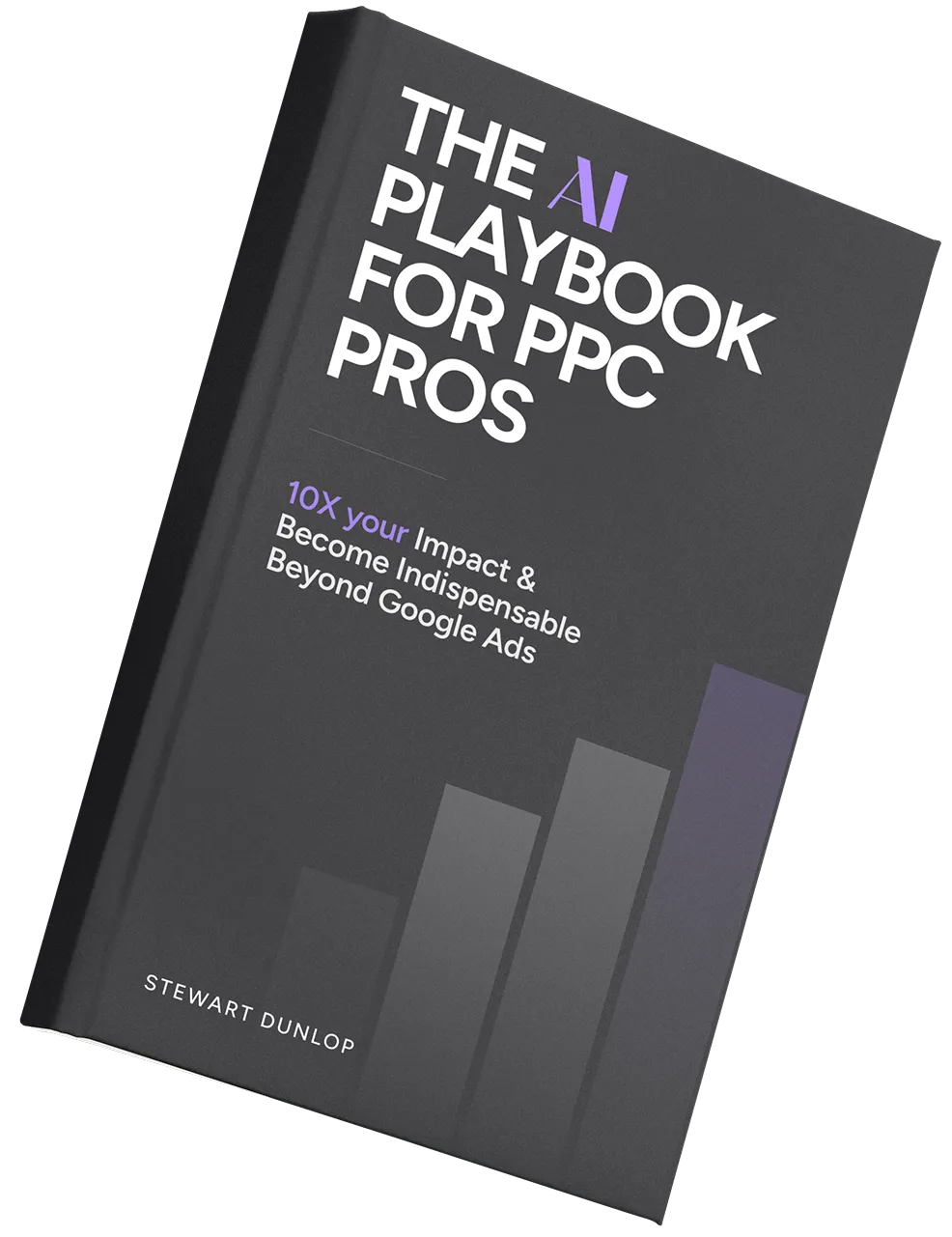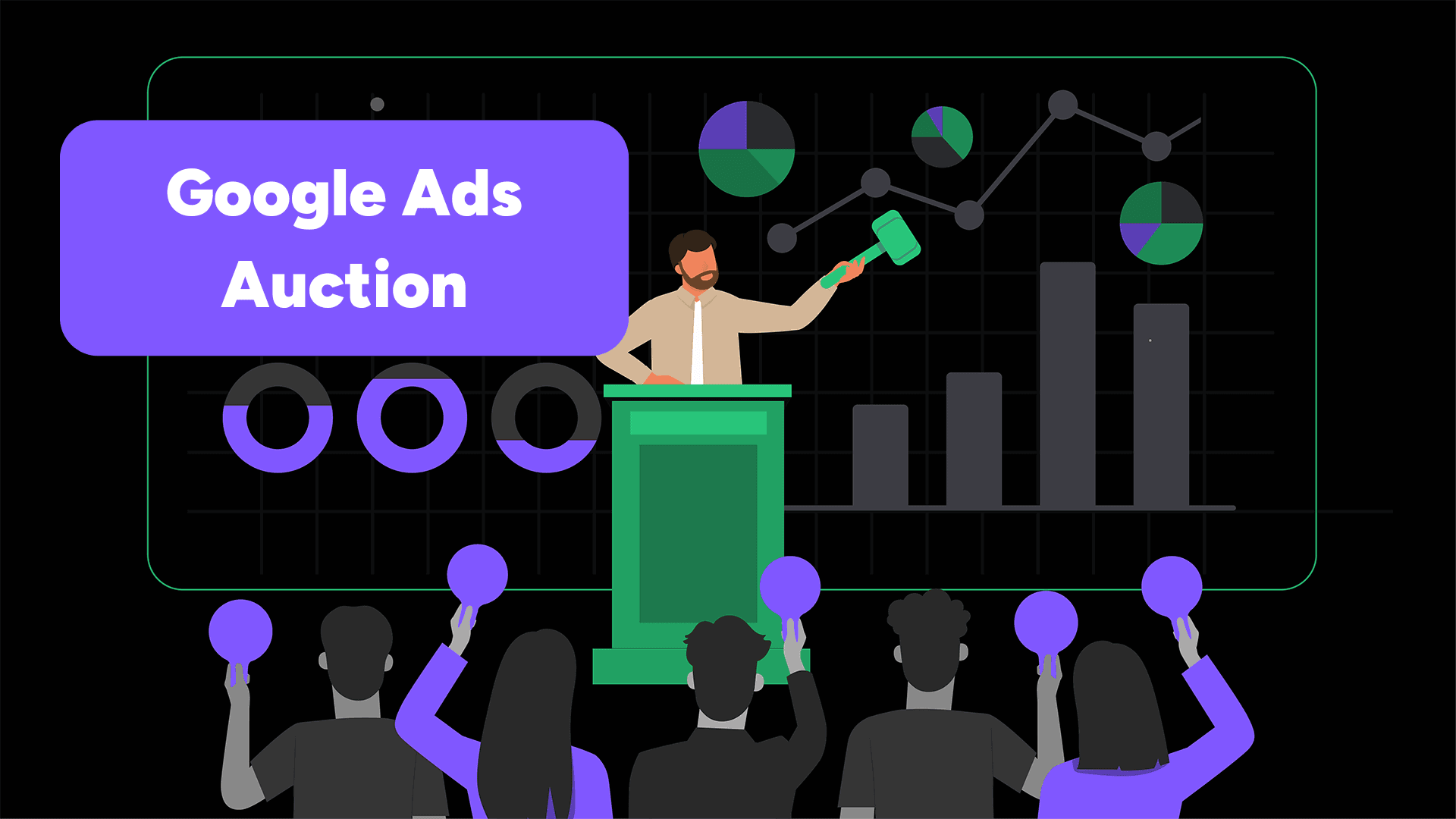
The Google ads auction is an automated process that happens each time someone makes a Google search.
It determines which adverts will appear for that specific search and in which order.
So this whole process is the "ads auction" and we'll explain below exactly how it works.
How The Google Ads Auction Works
Step 1 - Someone searches a phrase in Google.
Step 2 - Google determines eligible adverts and ignores all others.
Step 3 - Google gives each eligible advert an "ad rank" score, and then orders the adverts accordingly.
Only adverts with a sufficiently high "ad rank" have the possibility of showing.
Additionally, it's impossible to see what your ad rank is - Google keeps this hidden from advertisers.
As PPC experts, we have to optimize our adverts in order to achieve the highest ad rank possible and give our ads that best chance of showing up at the top of search results.
6 Factors Key Factors In The Google Ads Auction
Google has revealed that there are six factors that determine your advert's position during the auction process.
These factors ultimately determine your 'ad rank'.
- Your Bid - This is the amount you're willing to pay for each click. Nowadays this is normally automated by smart bidding. There are a number of bidding strategies available.
- Quality Score - This is revealed within your Google ads account. It's a scoring system of 1-10 based on your ad relevance, expected click-through rate and landing page experience.
- Context of Your Ad - This looks at what the user search is, what device they're searching from, the time of search and other factors.
- Ad Assets - This looks at other information placed on your adverts such as phone numbers & links to other pages on your website. If these are deemed effective, it'll positively contribute to your ad rank.
- The Competition - Out of two adverts, the one with higher ad rank will be more likely to win the position, but may also pay a higher cost per click for the privilege. If two ads have a similar ad rank, they'll both have a similar chance of winning in the auction.
- Ad Rank Threshold - You need to hit a minimum threshold number to be eligible to compete.
👉 With all of these factors taken into account, Google gives calculates and attributes 'ad rank' in real time for every single new search.

The Importance of Ad Rank
If you have a strong ad rank score, then your adverts are going to show up more.
Imagine you're bidding on an auction for a keyword like "real estate software":
- Ad Rank Calculation: Google calculates your Ad Rank based on your bid, ad quality, and search context.
- Eligibility: Your Ad Rank must meet or exceed the minimum threshold to show up in the results.
- Placement: Higher Ad Ranks get better placements. If your Ad Rank is 95 and the minimum to be at the top is 50, you might secure a top position, while a competitor with an Ad Rank of 45 would not be eligible to display.
Bid & Budget Matters
All else being equal, the advertiser with the higher bid is going to win the auction and get more placements & impression share.
However, nowadays the vast majority of Google advertisers use smart (automated) bidding strategies, which means that you don't have the power to increase or decrease your bid.
Smart Bidding optimizes your budget by adjusting bids based on the likelihood of conversion, which prevents overspending. It will dynamically increase bids when it thinks a user is more likely to convert, and decrease when they aren't, using the power of machine learning & thousands of signals.
That means that PPC budgets come into play in a huge way.
If your competitor has a $1,000 daily budget compared to your $500 daily budget, then they're simply going to get a higher impression share than you because they're going to be in the auction more frequently. Whereas with your smaller daily budget, Google might spend your budget by 3pm, while your competitor is constantly there in the auction.
Note: It doesn't actually work this way, but it's true that with a lower budget, you are simply not going to be as competitive in the auctions because you cannot show up as much as your competitor can.
Auction Insights - Metrics to Monitor
There are some key metrics you can look at within your Google ads account under the 'auction insights' section which will give you some indication of your ad rank and how you are performing against other top competitors.
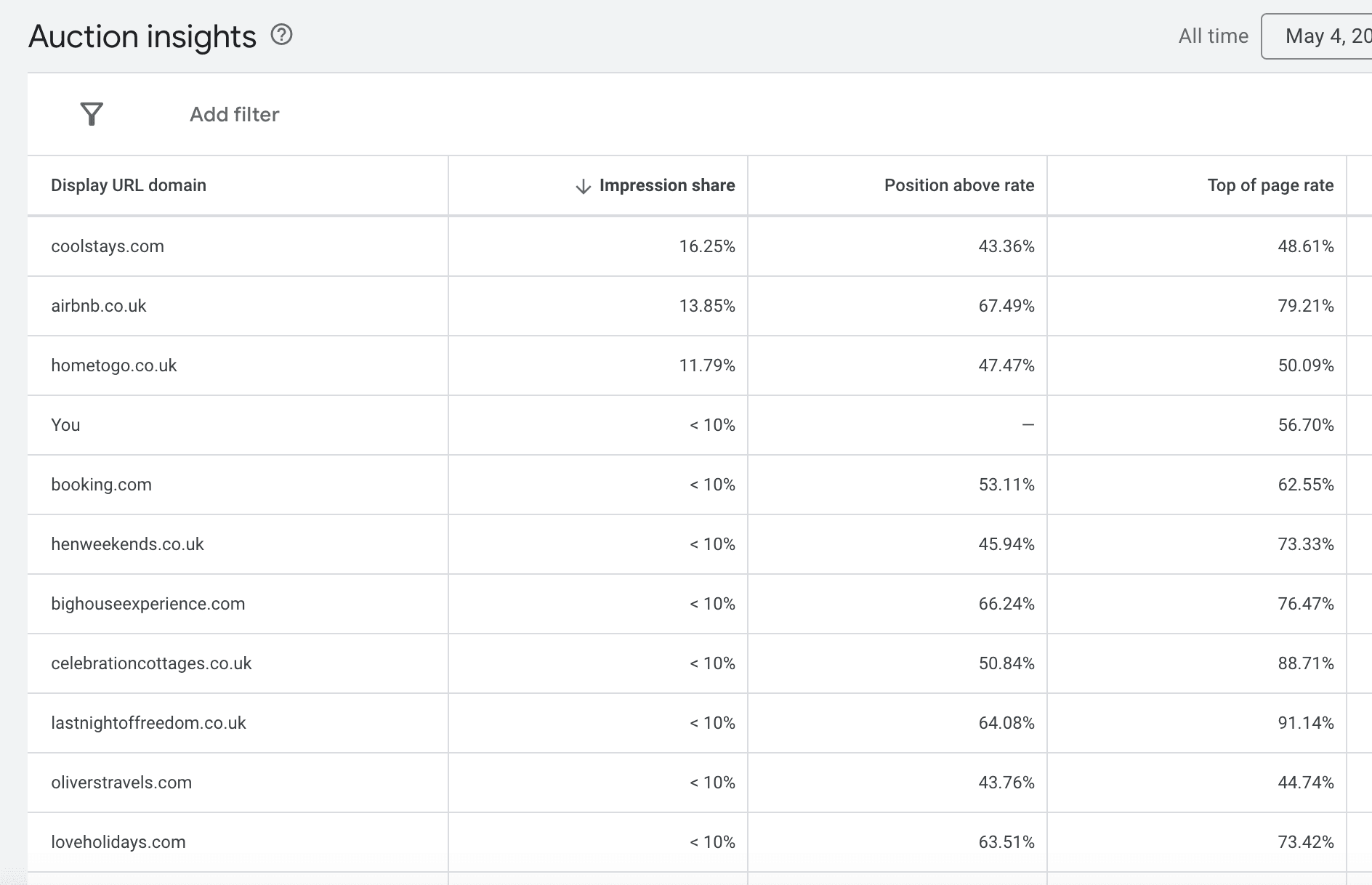
These metrics are:
- Impr. (Abs Top) %: Percentage of your impressions that are at the absolute top of the page.
- Impr. (Top) %: Percentage of your impressions that are at the top of the page.
- Search abs. top IS: Impression share for absolute top positions.
- Search top IS: Impression share for top positions.
As mentioned, this is one area where Google will in fact show how you're performing against industry-specific competitors, which is very useful for helping to optimize your ad rank.
How Google Influences The Auction System
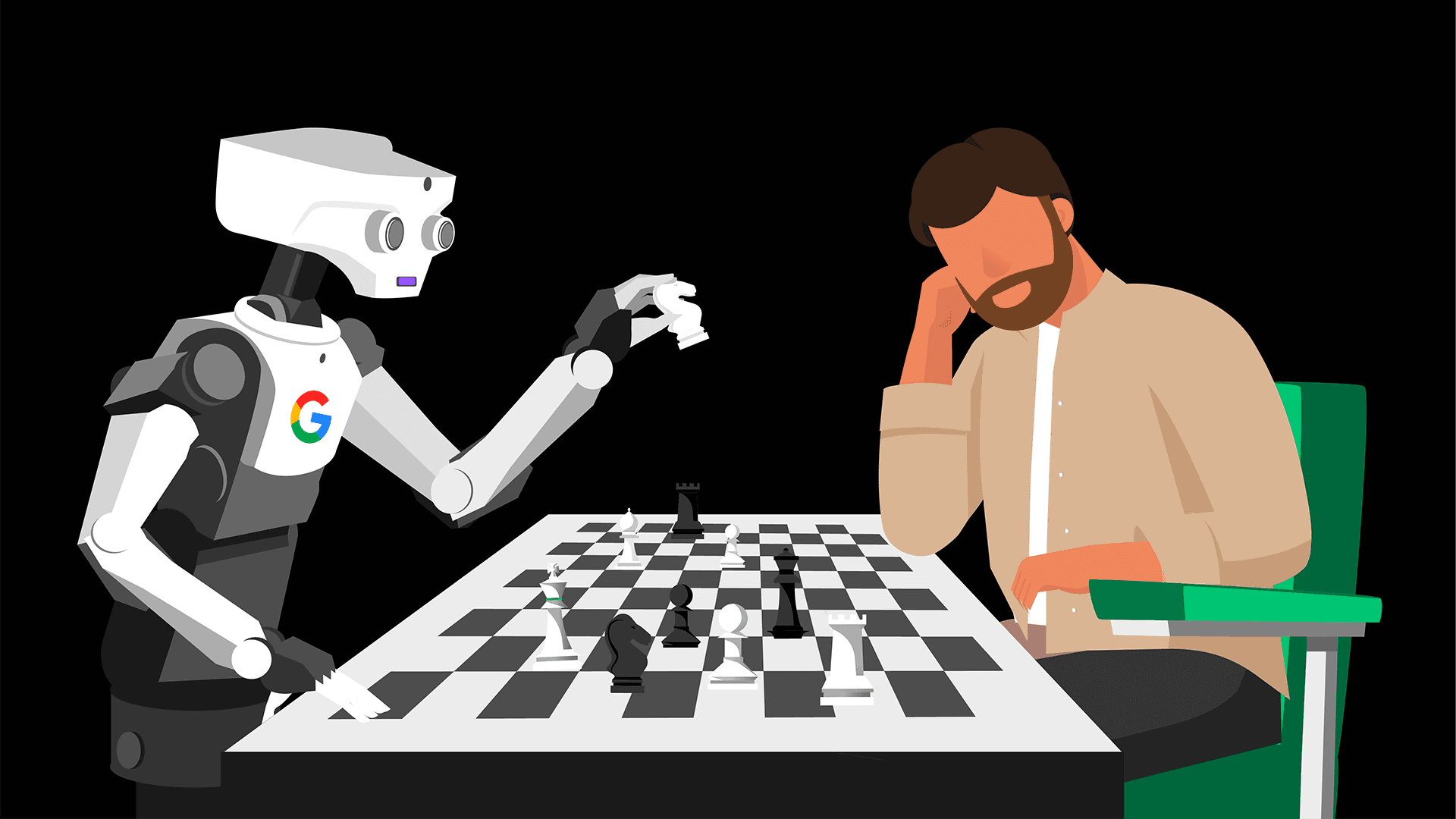
In 2024, Google went through a very public legal trial against the American department of justice.
This trial revelead some ways in which Google manipulates the search advertising auction and increases prices for advertisers.
- Pricing Knobs:
- Google has mechanism that allow it to adjust the dynamics of the auction to maximize revenue.
- Dr. Hal Varian, Google's Chief Economist, confirmed that these mechanisms can significantly influence pricing outcomes. This manipulation can include adjusting the algorithm to achieve desired revenue goals without necessarily improving the ad quality.
- Format Pricing:
- Format pricing is one of the primary methods Google uses to increase ad prices. This involves adjusting the cost associated with different ad formats, such as text ads vs. shopping ads.
- An internal document from 2016 highlighted the potential to make "billions" through format pricing adjustments. Another document from 2017 noted that format pricing was the "best knob to engender large price increases".
- The implementation of format pricing changes, such as the "Momiji" launch, led to significant price increases for advertisers, often without their explicit knowledge. This was described as a key revenue-driving mechanism for Google.
- Squashing:
- "Squashing" is another tactic used to increase the cost for advertisers. It involves artificially boosting the ranking of the second-highest bid in an auction to raise the price paid by the top bidder.
- This mechanism allows Google to recover lost revenue from changes that otherwise benefit users and advertisers but might reduce Google's revenue. It effectively increases the cost for the highest bidder, introducing inefficiency into the auction for more revenue.
- Randomized Generalized Second Price (rGSP):
- The rGSP auction model was introduced to replace traditional format pricing mechanisms. It involves randomizing ad placements based on their scores, which can lead to higher prices.
- Internal documents revealed that rGSP was considered a better pricing tactic, with initial impacts showing a potential 10% increase in Revenue Per Thousand Impressions (RPM).
- Google faced internal discussions about the need to explain rGSP to advertisers without causing problems, which indicate that they clearly felt it was a sensitive subject.
You can view all 143 slides released by the department of justice here.
We picked out some of the most interesting slides and quotes from the trial against Google.
These reveal a disturbing environment where clearly Google is trying to increase revenue from their ads whilst also decreasing visibility into exactly how their auction works.
The image below is from Michael Whinston, professor of economics at MIT.
He describes the process of 'squashing' which artificially inflates the bid of the runner-up in the auction.
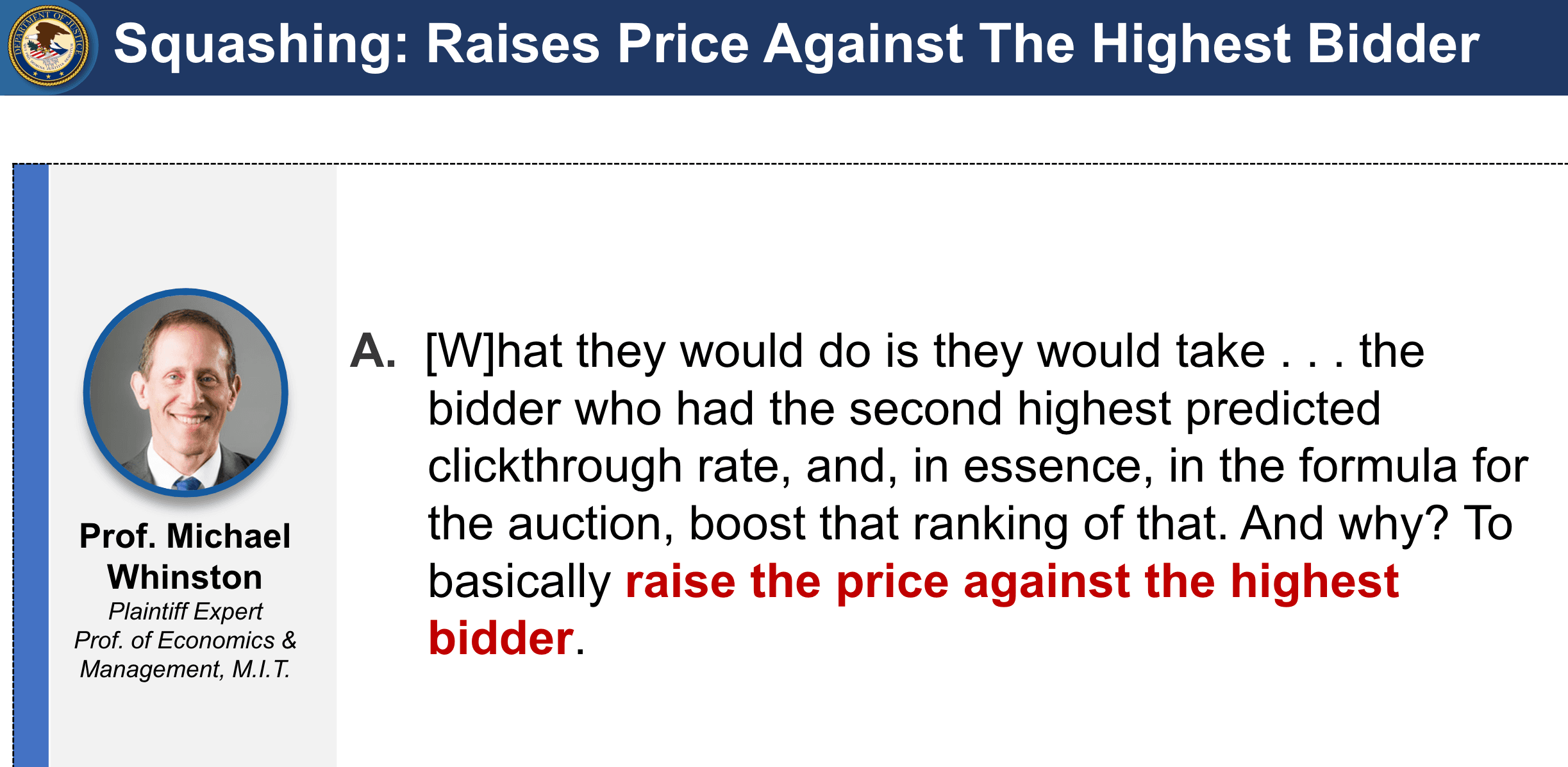
And below is an admission from Google's VP of ads Jerry Dischler that squashing causes the winner to pay more on average for adverts.
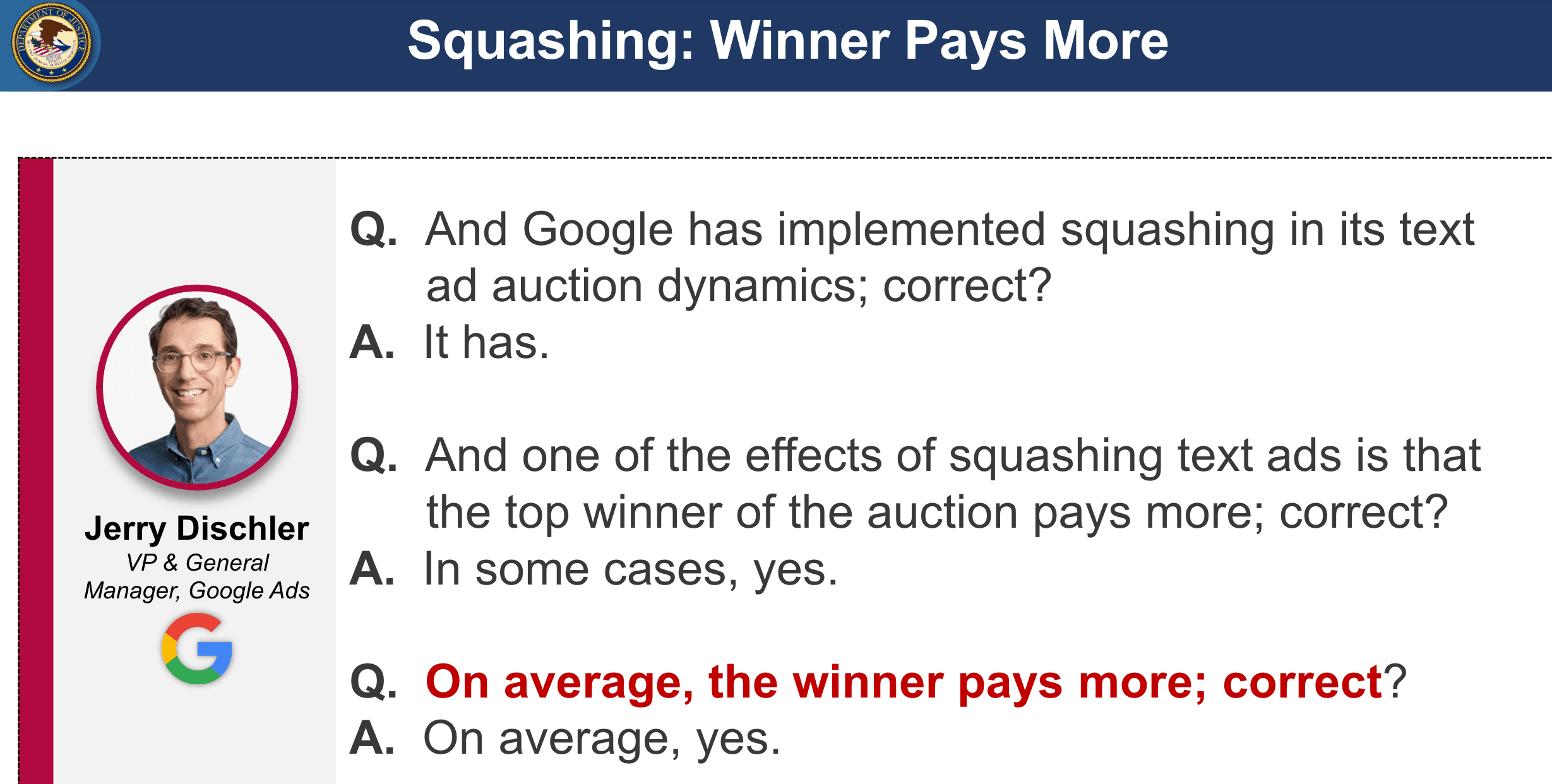
Additionally, we can see evidence below that Google is more willing to show low-quality ads than they 'ought to be showing' according to their VP of product management, Adam Juda.
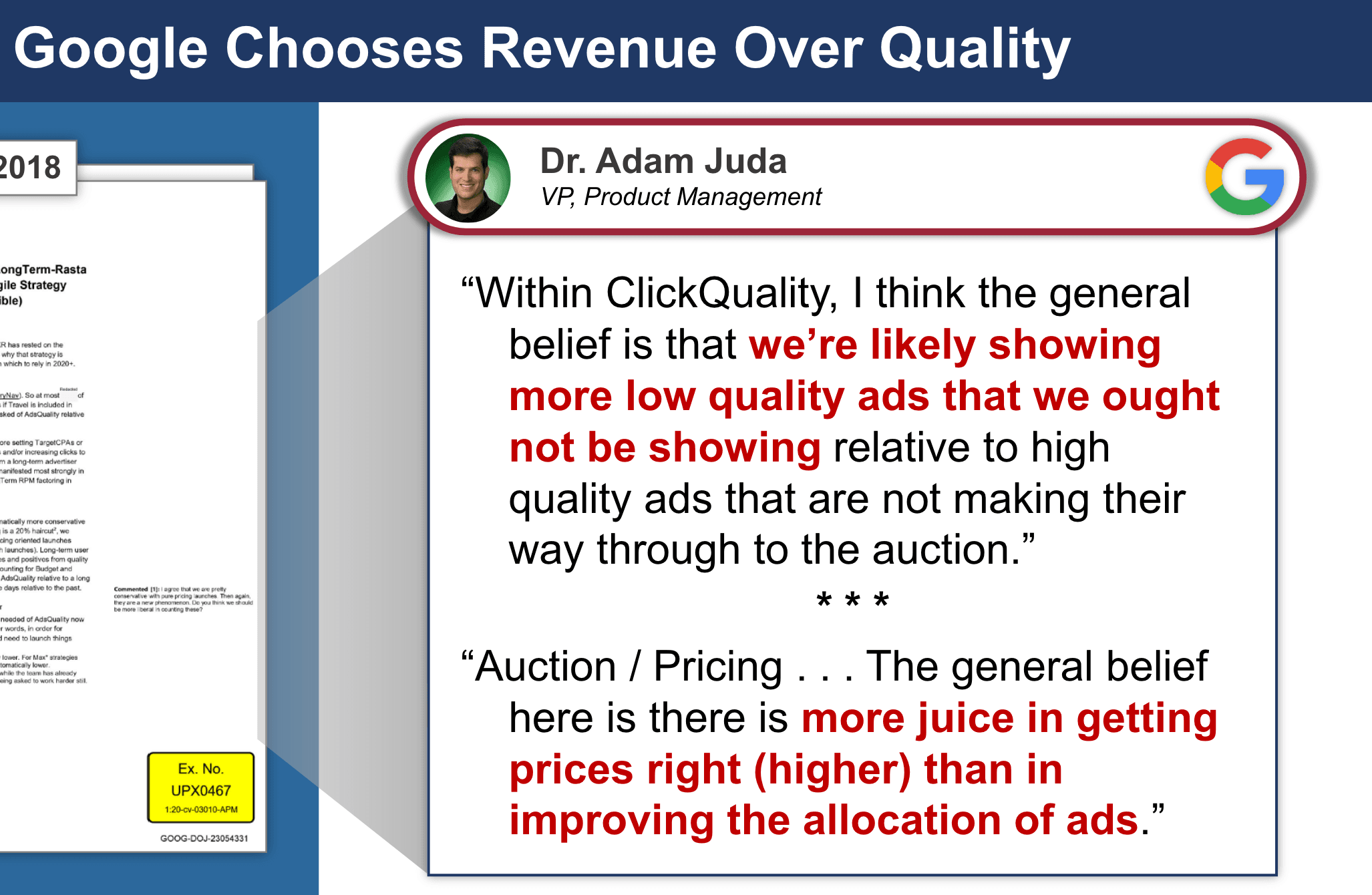
Expanding the Auction with Broad Match
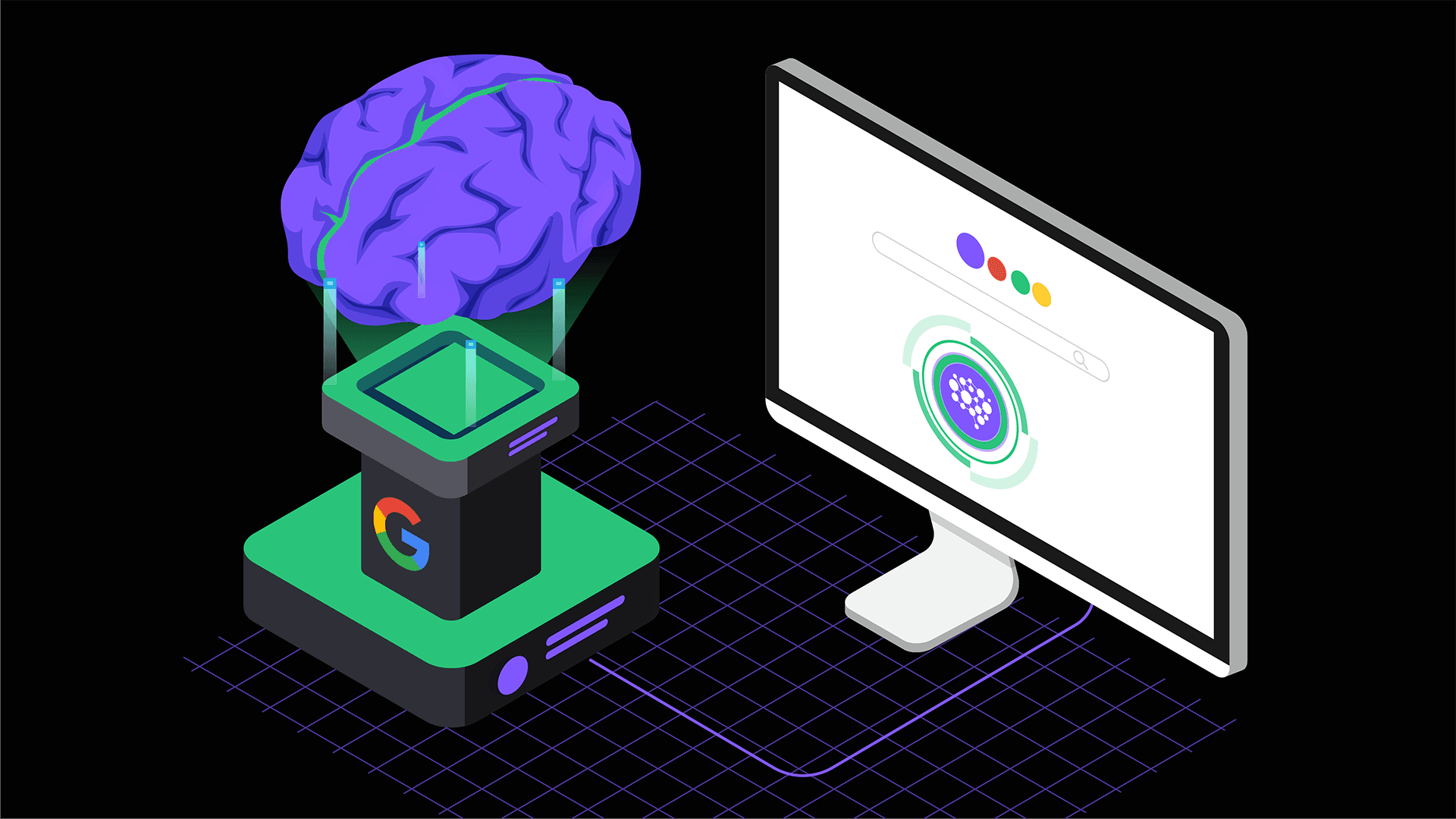
Google has been pushing broad-match campaign types for a long time now over exact match campaigns, telling advertisers that it's best to let their AI systems take control and determine exactly which keywords you should bid on.
This is exactly how their performance-max campaign type works as well - It's a completely hands-off advertising type that automatically determines where adverts are placed.
Whilst we're not suggesting that automated campaigns perform worse (machine learning is after all far more powerful than even the best marketer) we do think that the trial vs. the US Government highlighted some very concerning justifications for pushing more broad-match campaigns, as it seems that a major factor is to increase the competitiveness of ad auctions overall.
As we can see below, broad match means less control for advertisers as well.
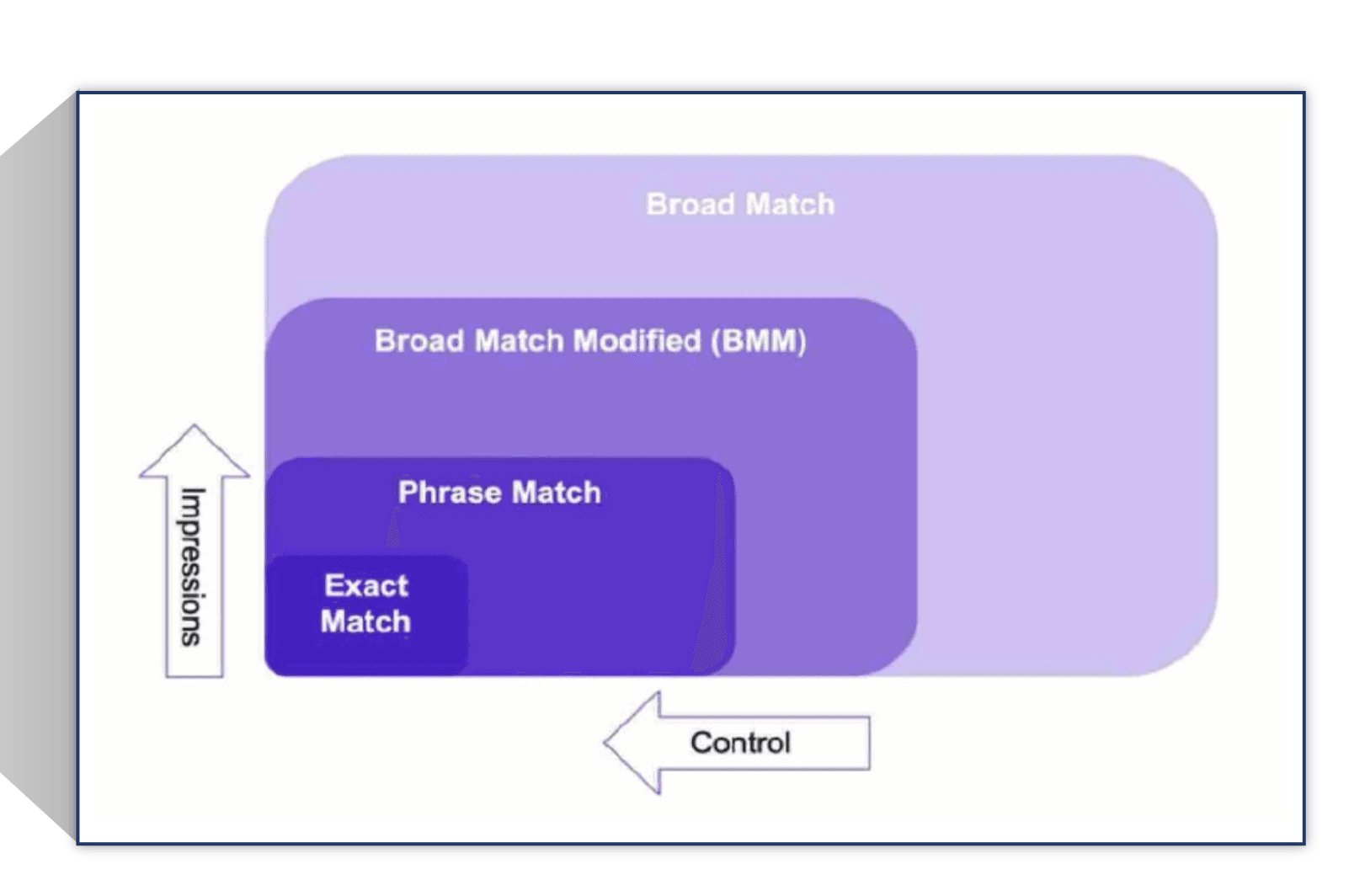
Here are some key highlights revealed from the court case against Google:
- Expanded Keyword Matching:
- Google's expanded keyword matching, often referred to as "broad match," increases the pool of queries for which an ad may appear. This leads to "thicker auctions", meaning more advertisers compete for a broader range of queries.
- Broad match reduces the control advertisers have over when their ads appear, leading to higher competition and, consequently, higher Cost Per Click (CPC) rates.
- Impact on Advertisers:
- Advertisers cannot opt out of broad match expansions, making it difficult for them to precisely target their desired audience. This lack of control can lead to less efficient ad spending and higher overall costs.
- Thicker auctions resulting from broad match implementations increase competition and drive up prices. Google's internal documents and testimonies confirm that this approach leads to higher CPCs and overall ad costs for advertisers.
- Match-Type Expansions:
- Google's match-type expansions are designed to increase coverage, leading to denser auctions and higher CPCs. These expansions are implemented to ensure that more advertisers are brought into each auction, driving up prices due to increased competition.
- Advertisers are often unaware of these expansions until they see the impact on their ad spend. The inability to opt out of these changes means that advertisers are forced to participate in increasingly competitive and expensive auctions.
USA vs. Google - Court Case
The antitrust lawsuit by the Government against Google also revelead some compelling testimony around expanded matching, and broad-match campaigns.
We have picked out some interested slides and quotes below.
Professor Kinshuk Jerath of Columbia business school speaks to how advertisers cannot opt out of many auctions nowadays with broad matching in place and advertisers entering more auctions by automation.
This all results in higher prices in the auction.
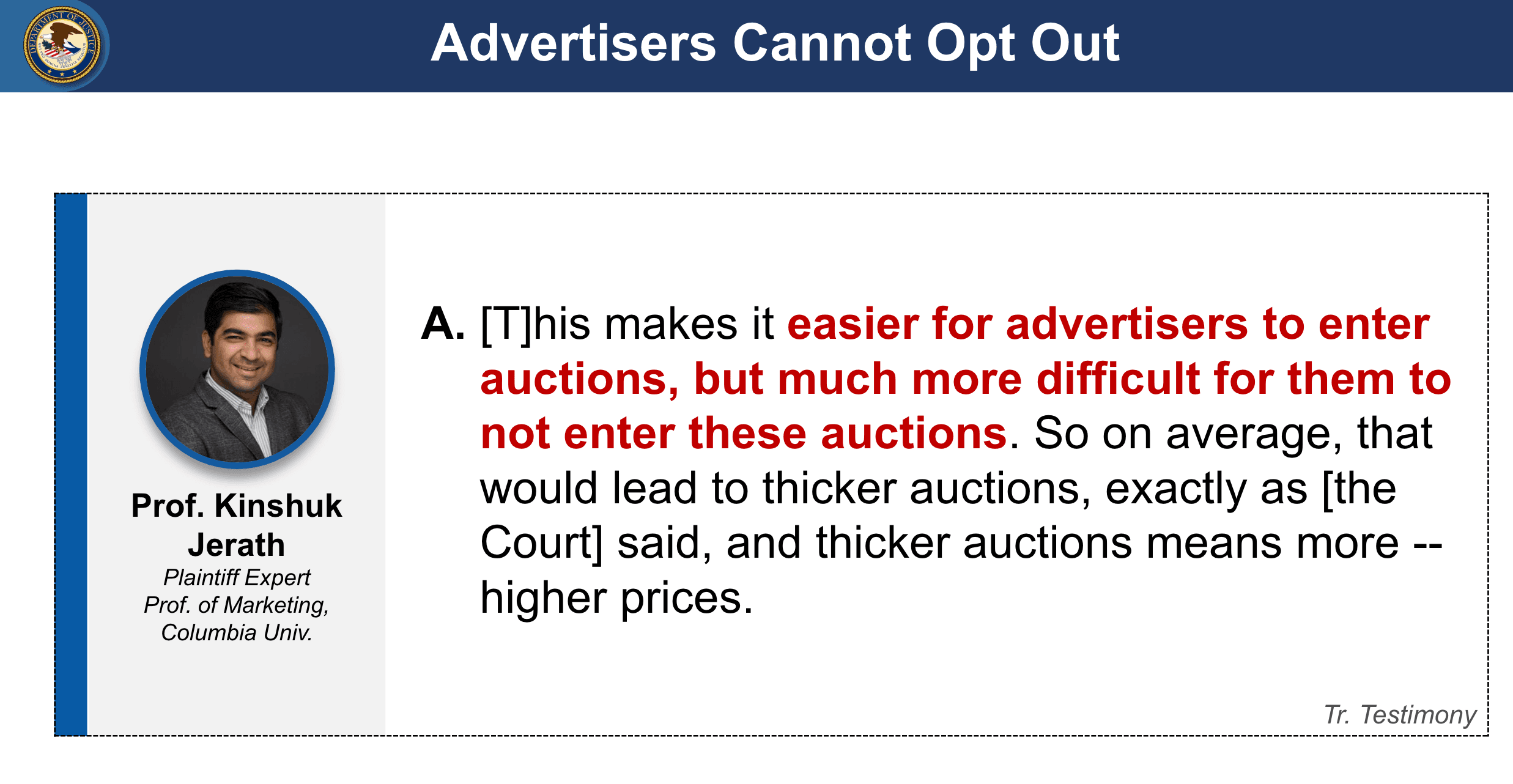
Below, Google's own VP of ads admits that thicker auctions (as a result of semantic, broad matching) leads to higher prices in general.
Mark Israel, PhD in economics at Stanford, agrees.
Summary
We've explained in detail exactly how the Google Ads auction works in practice.
Essentially, the highest quality adverts with the largest budgets in place should generally perform better.
We've also for the first time ever got a peak behind the scenes at exactly what Google is doing to influence auctions and ad prices.
But it would be unfair to paint Google as simply the 'bad guy' looking to extract maximum revenue from advertisers.
Of course, it's very clear that the entire company is incentivized to increase revenues as high as possible, but the fact still remains that Google's advertising technology is head & shoulders above the competition.
Advances in automation and broad-match campaigns give advertisers far less control, but they can also give advertisers much better business outcomes due to the power of machine learning, even if those ads are more expensive.
So although marketers are absolutely correct to remain skeptical of Google and their practices, the bottom line is that so long as Google ads are still profitable and generating strong business outcomes, advertisers will still continue to invest in Google ads, when no superior channel exists.
The fact is that the entire World (90% anyway) is still using Google as their primary search engine, and many advertisers are still seeing terrific ROI from Google ads.
